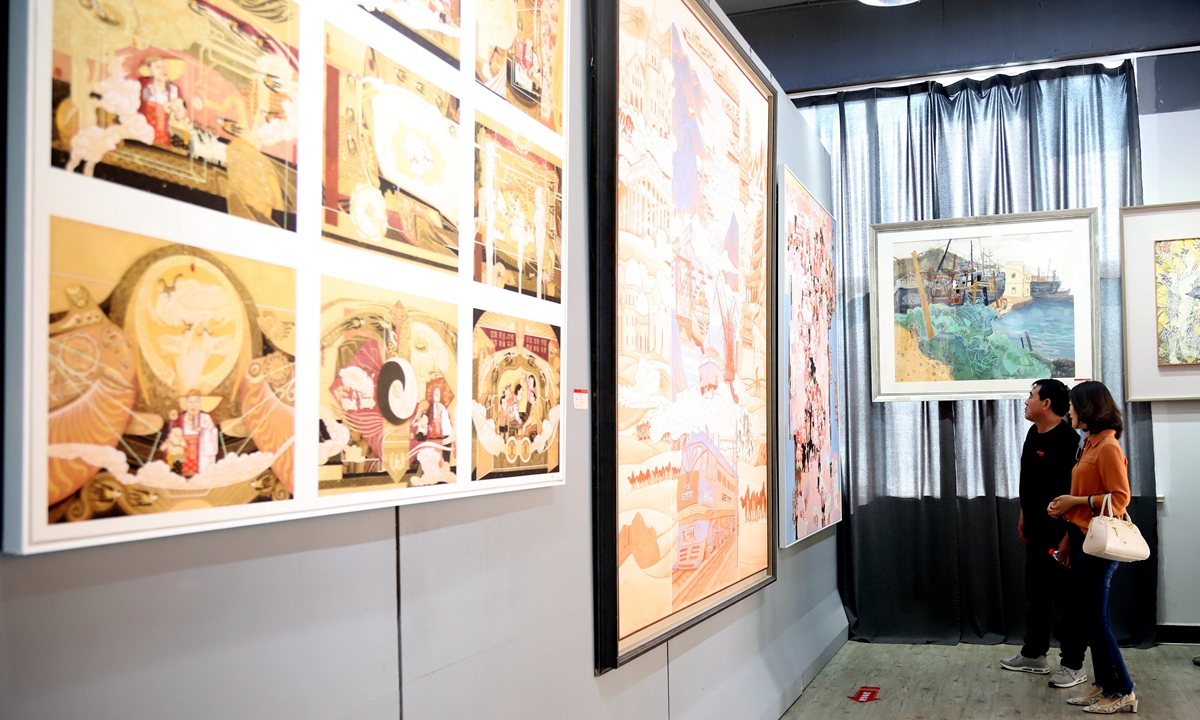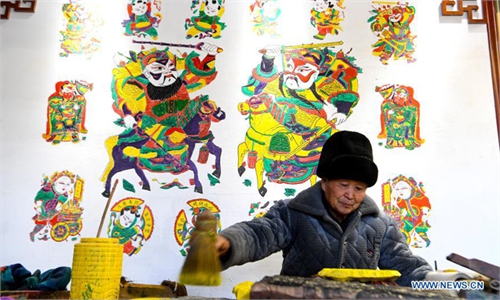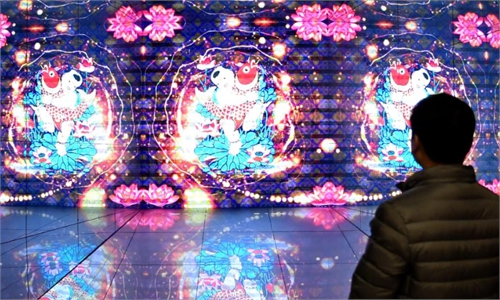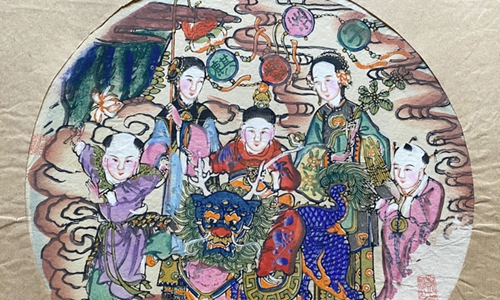ARTS / CULTURE & LEISURE
Revitalizing intangible cultural heritage for a youthful, vibrant future

Jiaonan New Year painting Photo: VCG
Tian Sheng, an inheritor of the Jiaonan New Year painting, was pleased to be surrounded by young visitors who were admiring his exquisite creations at an exhibition recently."In recent years, we have incorporated some of the unique elements from the Jiaonan New Year painting into our products, and they have become an instant hit," he said, picking up a porcelain tea set depicting vivid scenes of sowing seeds and harvesting.
The exhibition was held as part of China's first annual conference on the protection of intangible cultural heritage that wrapped up in Xi'an in Northwest China's Shaanxi Province on Monday.
A municipal-level intangible cultural heritage item from Qingdao in East China's Shandong Province, Jiaonan New Year paintings draw on the features of traditional Chinese New Year paintings as well as the artistic touches of traditional Chinese Gongbi paintings and paper cuttings.
All these characteristic elements come together to create a fine style of art with vibrant tones and flamboyant figures. This distinctive style gives the artworks a touch of elegance, making them popular.
"Intangible cultural heritage can truly be appreciated and passed down to future generations only when it is integrated with modern aesthetics and people's daily lives," Tian said.
According to Chai Zhanzhu, inheritor of "Jiaotai Ci," literally meaning "twisted clay porcelain," the vitality of intangible cultural heritage lies in technological innovation.
"Jiaotai Ci," listed as a national-level intangible cultural heritage, involves porcelain clay of two or more colors and is known for its delicate twisting and firing techniques. Once lost, this porcelain-making technique was retrieved through the efforts of skilled craftsmen and scholars.
"Innovation is our focus in carrying forward the technique," said Chai. "In the past, there were only, for instance, patterns of feather and chrysanthemum. Now, images of landscapes, figures, flowers and birds can also be woven into the porcelains."
Chai and his fellow craftsmen have also joined hands with universities to upgrade the clay and glaze techniques, and have obtained a number of patents.
According to Chai, his village Dangyangyu now has six enterprises, one professional cooperative and over 20 family workshops engaged in the production, processing, sales and technological research of "Jiaotai Ci," with an annual sale of 300,000 pieces (sets) of porcelains.
Meanwhile, more young folk artisans have been inheriting traditional skills and reaching a larger audience with their art.
Born into a family of ceramic workers in North China's Shanxi Province, Qiao Lin returned to her hometown after studying in the US to work on Fahua artwork, a special type of traditional glazed porcelains.
"When I saw foreigners' enthusiasm for Fahua artwork in the United States, I considered passing on the skill and even invigorating the handicraft," she said.
Xinhua



